Sixteen miles (26km) off the windswept coast of northern Scotland, the future of renewable energy is taking shape. Rotating rhythmically in the breeze, the five colossal turbines of the Hywind Scotland wind farm look much like any other off-shore wind project, bar one major difference – they’re floating.
While conventional offshore turbines sit atop metal and concrete towers fixed into the seabed, Hywind’s turbines rest on buoyant steel keels that bob with the waves. Carefully balanced, they remain upright despite the undulating conditions. This simple sounding, yet devilishly complex design is changing the way green developers view offshore wind.
It could prove to be an important development as the world strives to meet the net zero carbon emission targets that countries committed to in the Paris Agreement on Climate Change. The energy sector as a whole currently accounts for around three quarters of all the greenhouse gases emitted by human activity.
To cut those emissions, green electricity will need to be at the core source of global energy, according to the International Energy Agency. It says that by 2040, half of the world’s energy needs will have to be met by electricity produced in a net zero way.
With growing numbers of electric vehicles, combined with increased demand for electricity to replace fossil fuels in domestic and industrial uses, electricity networks will also need to become far more flexible with more ways to generate and store energy. It means that by 2045, our energy network could look radically different to the way it does today.
Projects like Hywind’s floating wind farm offer a present-day glimpse of what that future could look like.
The reasons for this are two-fold. Firstly, unlike fixed units, floating turbines can operate in deep waters far from the shoreline, where winds tend to be stronger and more consistent. Many of the globe’s most densely populated coastal regions straddle these deep waters, according to Henrik Steisdal, a Danish inventor at the forefront of floating wind innovation. He says this gives floating wind another advantage – it can serve communities that currently don’t have much meaningful wind power capacity.
“Several countries have big offshore areas close to their population centres, but at depths that are simply too large for bottom-fixed turbines,” explains Steisdal.
“In places like Korea, Taiwan, Japan and California, you can only manage a moderate amount of conventional offshore wind, or maybe even none at all, so floating turbines are the only option in the longer term.”
While floating turbines overcome some of the issues that make offshore wind farms in deep waters impossible, there are still challenges that have to be overcome. There are some concerns about what impact large arrays of floating wind turbines might have on the marine environment.
The price of floating wind projects is also still high – costing almost twice as much per megawatt hour of electricity produced compared to bottom-fixed offshore wind. But those costs are expected to drop as the technology becomes more established, as has been seen with other wind energy projects.
But as one question is answered – how to harvest winds from deep, distant waters – another arises: what to do with the electricity generated?
Grid constraints have long been a problem for wind power developers, with fears of a system overload when conditions are particularly blustery. To avoid this, turbines are routinely powered down, a costly process known as curtailment. And what happens in those periods when the wind isn’t blowing hard enough? Add in the logistical challenge of laying dozens of miles of subsea cables, and it’s clear another approach is needed.
Although high voltage submarine power cables are now relatively common, they are expensive to install and maintain, costing five to 10 times more than overhead lines according to some estimates.
Enter hydrogen, the Universe’s most abundant element and – for many – the key to the future of floating wind.
“If it’s especially windy outside and you’ve got surplus electricity being generated, there’s an alternative to shutting the system off,” says Scott Hamilton, renewables division manager at Xodus, an energy consultancy. “Rather than waste those extra electrons, they can be used to create hydrogen fuel.”
Doing so requires an electrolyser – a machine that splits water into its component parts: oxygen and hydrogen. When renewable sources are used to power this process, the latter is referred to as “green hydrogen”.
Highly combustible, hydrogen has the potential to replace fossil fuels as a carbon-free source of energy. On the Scottish island of Orkney, a world leader in green hydrogen development, the gas is already being used to power vehicles and heat buildings, with plans for a hydrogen-fuelled ferry in the not-so-distant future. A similar pilot project due for completion in 2023 in Buckhaven, Fife, also in Scotland, will use renewable energy from wind to produce hydrogen fuel for heating and cooking in around 300 homes.

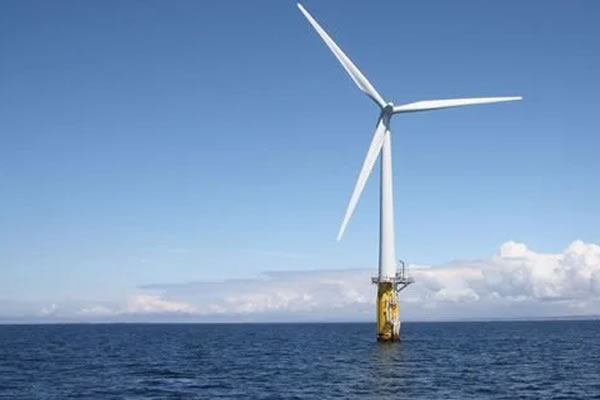
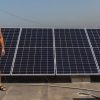
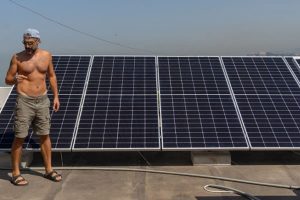
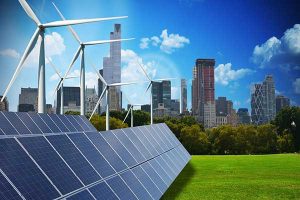
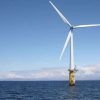
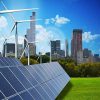

Leave a reply